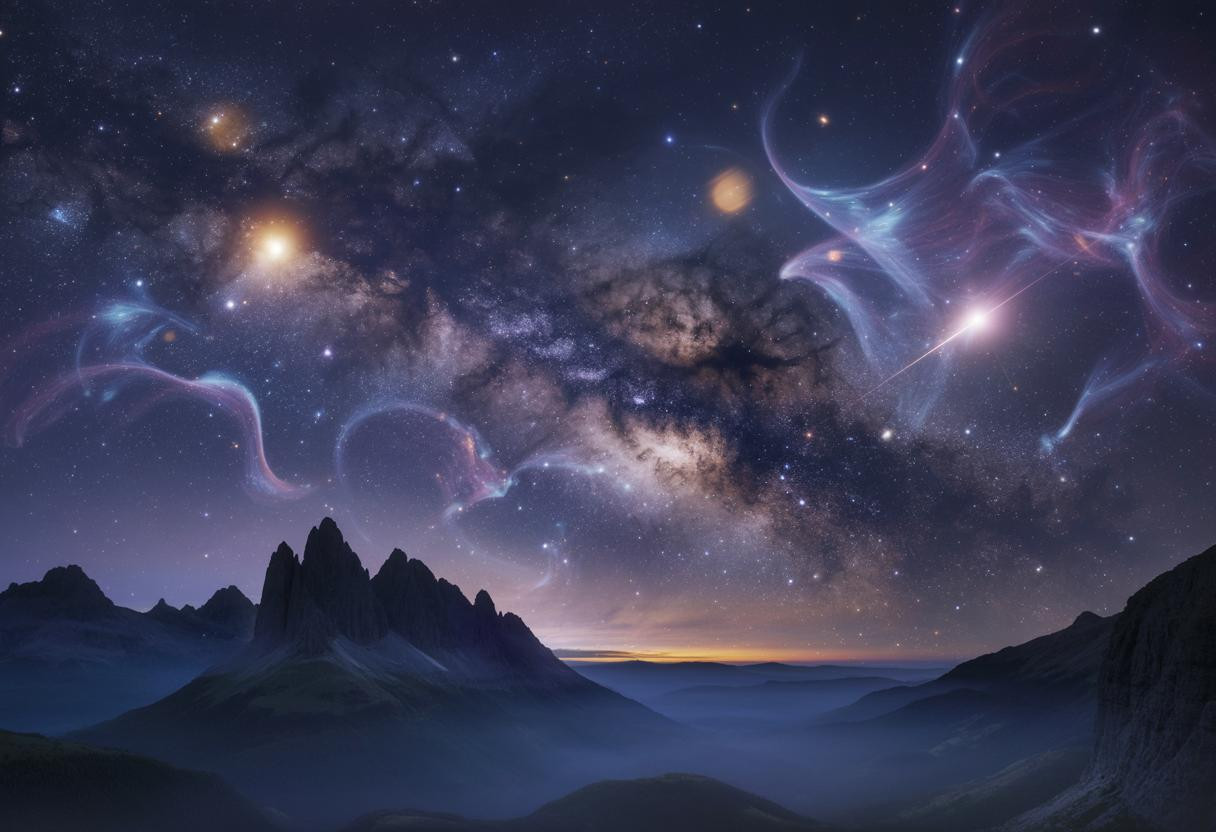In a groundbreaking astronomical discovery that has left scientists awestruck, researchers have identified what they’re calling the “Quipu superstructure” – now confirmed as the largest coherent structure in the known universe. This cosmic behemoth, named after an ancient Incan counting system, stretches an mind-boggling 1.3 billion light-years across space and contains approximately 200 quadrillion solar masses of matter.
The cosmic tapestry: What exactly is Quipu?
Quipu consists of 68 massive galaxy clusters interconnected through vast filaments, creating a cosmic web that resembles its namesake Incan device. What makes this discovery particularly significant is that scientists have managed to confirm it as a single, coherent entity – unlike other theoretical structures whose continuity remains debated.
“This is technically the largest structure in the nearby universe that we can confirm with absolute certainty,” explains Dr. Hans Böhringer from the Max Planck Institute, lead researcher on the discovery. “Larger structures might quite probably exist if we inspect ever-larger cosmic volumes, but Quipu represents our most significant confirmed finding.”
How scientists mapped this cosmic giant
The identification of Quipu relied on sophisticated technology and methodology that wasn’t available even a decade ago. Researchers utilized data from the ROSAT X-ray satellite, which specializes in detecting galaxy clusters through their X-ray emissions. This approach allowed them to map clusters located approximately 425-800 million light-years from Earth.
The discovery process involved:
- Analyzing X-ray survey data to identify galaxy cluster locations
- Mapping redshift intervals to determine three-dimensional positions
- Confirming physical connections between clusters
- Creating comprehensive models of mass distribution
Beyond Quipu: The controversial cosmic titans
While Quipu now holds the title of largest confirmed structure, some astronomers point to the theoretical Hercules–Corona Borealis Great Wall, which might stretch up to an astonishing 10 billion light-years. However, as astrophysicist Dr. Elena Martinez notes, “The difference is critical – we can physically map Quipu’s continuity, whereas these other candidates remain speculative constructs.”
“Understanding these massive structures is like piecing together our cosmic family tree. Quipu isn’t just big – it’s fundamentally changing how we understand galaxy evolution and the very fabric of our universe,” says cosmologist Dr. Raj Patel.
The dark matter connection
Like all cosmic mega-structures, Quipu is predominantly composed of dark matter, the mysterious substance that makes up approximately 85% of all matter in the universe. This discovery provides unprecedented opportunities to study how dark matter shapes our universe on the grandest scales.
The implications for our understanding of technology mirror those in astronomy. Just as China’s robotic workforce is transforming industry through unseen technological forces, dark matter silently shapes our cosmic landscape.
What this means for our understanding of the universe
Quipu’s discovery challenges fundamental cosmological principles about universal homogeneity on large scales. Scientists compare this revelation to finding an unexpected mountain range on what was thought to be flat terrain – it forces a reconsideration of basic assumptions.
Key implications include:
- Refinement of cosmological models
- New insights into galaxy formation and evolution
- Better understanding of dark matter distribution
- Potential connections to cosmic expansion anomalies
What lies beyond our cosmic horizon?
As telescope technology advances, similar to how Meta’s AI glasses are expanding our perceptual capabilities, astronomers anticipate discovering even more massive structures. The science fiction of yesterday becomes today’s scientific reality.
Like Samsung’s innovative cooling systems that enhance performance, new observational techniques will allow scientists to probe deeper into cosmic mysteries. In a way, these diagnostic breakthroughs mirror advances in healthcare, where pattern recognition reveals previously invisible structures.
What cosmic wonders still await our discovery in the vast, expanding universe? As Quipu reminds us, we’ve barely begun to map the true scale and complexity of our cosmic home.
